Introduction of the Researches
Information Network and Media Laboratory(Kinoshita Laboratory)

We do research on information security, copyright management, information retrieval and distribution, which are indispensable for the next generation of the internet. Our recent themes include detection and filtering method of Covert Channel, which is a contradiction in access rights to protect personal information and prevent information leakage, a copyright management system to distribute digital content through a network, clarifying complex rights including secondary use, and managing them with information capsules and mobile agents, contents management using digital watermarks, database searches using ontology and topic maps, and query generation interfaces that perform image searches using ambiguous memory of users as clues.
Light-wave Electronics Laboratory(Chen Laboratory)
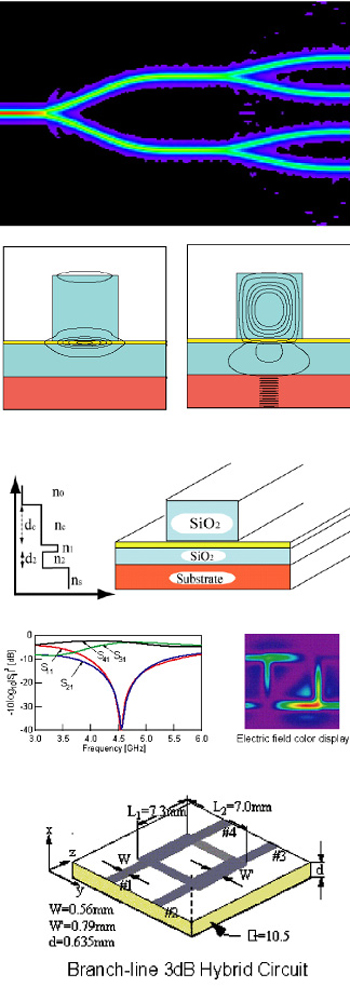
"Basic Technologies to Comprise the IT Society of the 21st Century - Optical Communication and Wireless Communication"
We conduct researches on mobile wireless communication and optical communication in the high frequency region using electromagnetic waves and light, in particular, on computer simulation software such as the FDTD method and 3D FD-BPM as well as the actual circuit fabrication, measurement, and evaluation from both hardware and software perspectives, for the development of ultra wideband, ultra-high-speed, high-performance electromagnetic wave circuits for ubiquitous communications between computers and digital home appliances, wireless LAN, and RF tags.
The world of ubiquitous information and communication electronics is a new and interesting field with a wide range of research field. So, if you do your research, you can contribute to society, meaning what you want to do (your dream) is right here.
The dream of researchers involved in optical communication studies is to build a global information and communication network by extending optical fibers to each household as the next-generation optical communication.
In the field of mobile wireless communication, we also do our research to establish the design theory of UWB bandpass filters and the human-friendly and safe electromagnetic environment (EMC/EMI), aiming for ultra-high speed and flexible wireless communications.
Biological and Environment Measurement Laboratory(Tsuchiya Laboratory)
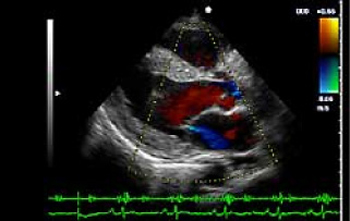
We are researching medical ultrasound and marine acoustic / ultrasonic speakers.
For humans, "sound" is an important source of information in our daily lives, and we can acquire so much from human voices, such as emotions and meaning of words with the tone and accent. High-frequency "ultrasound" is inaudible to humans, but it can extract various information from the world. For example, the ultrasonic diagnostic device called echo in hospitals can examine the inside of a living body in real time. Since the device uses sound, it has no side effects on the body, so it is a very safe and human-friendly measurement technology. Sound can also be used to measure the temperature distribution simultaneously throughout the Pacific Ocean, which is useful to predict extreme weather events. The measurement puts almost no load on the environment. Speakers using ultrasonic waves are a technology that conveys sound only to specific people. Since surrounding people cannot hear the sound, you can keep the noise down and maintain a comfortable environment. In our laboratory, we are conducting the latest research on measurement technology using "human and environmentally friendly" sound system.
Information and Communication Laboratory(Nakamura Laboratory)
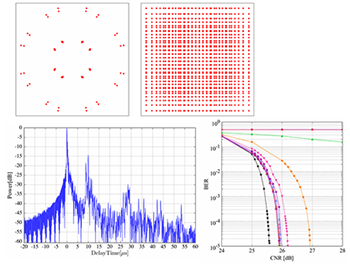
In recent years, the amount of information handled by individuals has continued to increase due to improvement in performance of smartphones and the spread of tablet devices, where higher speed communication is required. Currently, the operation of 5G, which can achieve communication speed of more than 10 times compared to 4G, has started in the world. At our laboratory, we study the core technologies to realize such high-speed communication. We are also researching not only the high-speed communication, but also highly reliable communication required for machine control in factories and automatic driving technologies. Such that we study the most suitable communication methods for various purposes, aiming to realize more convenient life by establishing communication method
Power and Energy System Research Group (Negishi Group)
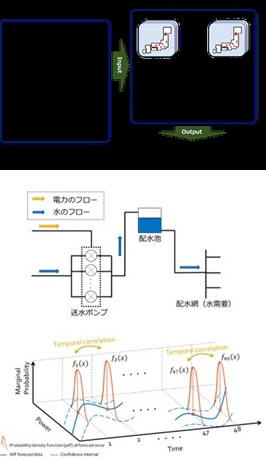
Our group conducts research on system modeling and social design aimed at realizing adaptive power and energy systems resilient to environmental changes. Traditionally, energy supply systems have consisted of numerous power plants, control devices, and integrated management systems that coordinate their operations. However, recent developments such as the introduction of renewable energy sources to achieve low-carbon societies and the utilization of customer-side energy devices for balancing supply and demand have significantly increased the complexity of these energy supply systems. Given these circumstances, our research explores essential system technologies required to reliably manage and operate increasingly complex energy systems. Guided by key concepts such as "uncertainty" and "multi-time scale," we strive to address these critical questions through our research activities.
Quantum Device Laboratory(Nakayama Laboratory)
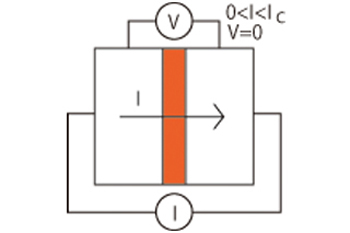
At the quantum device laboratory, we are making new quantum devices using superconductors and magnetic materials. The figure shows a tunnel-type device in which an extremely thin aluminum oxide film of several nanometers is sandwiched between two superconductor niobium metal electrodes. When the flowing current is below a certain critical value (lc), the potential difference V does not appear and it becomes a superconducting current, where electricity flows without any resistance. The magnetic field applied to this device from outside is scanned three-dimensionally to investigate the extremely sensitive magnetic field modulation property of the superconducting current.
Intelligent Information Systems Laboratory(Noto Laboratory)
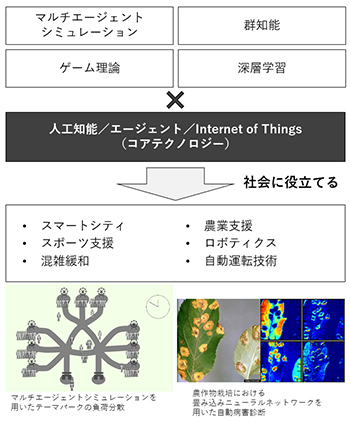
In our laboratory, we do a research to create high-quality and intelligent software with advanced abilities like the human brain by utilizing the artificial intelligence technology. Recently, the "Internet of Things (IoT)" environment where all things familiar are connected to the internet seems to be becoming the norm, and we are thinking about how artificial intelligence technology can be used in such situations. Our "Agent" study is one example. Agent is an anthropomorphic software that recognizes and judges the surrounding situation to act independently, performing secretarial work on behalf of a human, capable of complicated tasks.
With artificial intelligence, Agent technology, and IoT as core technologies, we will conduct research aiming to create software that can support the society while incorporating the latest technologies such as deep learning. In this type of study, we are looking at technology that can be applied to the practical world, whose applications include industrial to living infrastructure, such as self-driving, agriculture and sports, and smart city. We also aim to actively contribute our results we achieved back into the society.
Signal Analysis Laboratory(Fujinoki Laboratory)
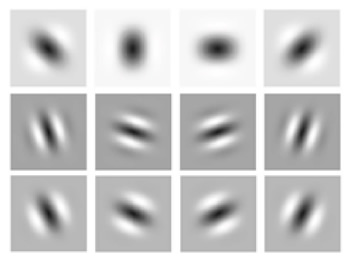
Our research interests focus on theoretical aspects on signal processing that supports the foundation of information and communication technologies, and applied research on numerical simulation of actual signals or data. We deal with a wide variety of multidimensional signals such as sounds, images, computer graphics, medical images, and financial time series data. We mainly study the method for feature extraction and an efficient representation of signals using tools of harmonic analysis such as Fourier analysis, time-frequency analysis, sampling theory, sparse signal processing, wavelet analysis, frame analysis, and inverse problems.
Future Energy Engineering Laboratory (Matsuki Laboratory)

The rapid increase in the world population and the resulting massive consumption of fossil fuels are causing environmental pollution and climate change, which are becoming increasingly serious problems on a global scale. For human beings to overcome this crisis and survive permanently, it is essential to build a new energy society that is harmonious and sustainable without placing a burden on the environment. Our goal is to create technologies that promote the use of such new energy and environmental harmony. In order to achieve this goal, we are developing new energy conversion devices that effectively utilize various types of energy such as solar heat, indoor light, waste heat, and vibration, as well as new solar cells with high efficiency and low material consumption, and new devices with environmental purification functions. In addition, we are actively developing new fabrication and evaluation techniques to achieve the creation of new materials and devices and are conducting research while experiencing the excitement of manufacturing.
Semiconductor Engineering Laboratory(Yamaguchi Laboratory)
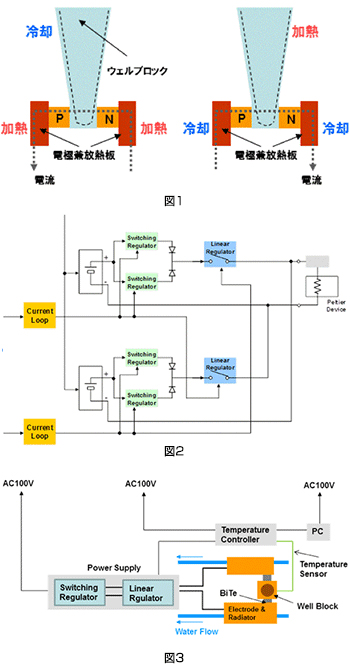
In our laboratory, we do a study combining electronics, heat, and biotechnology. In particular, we have realized a high-speed thermal response of the Peltier device by thermoelectric conversion, with which we developed a high-speed nucleic acid amplification system. Furthermore, we propose an ultra-high-speed nucleic acid amplification method using vibration, a completely method, and we are also working on the development of devices.
On the other hand, outside of research, we host various events such as sports competitions and BBQ gatherings.